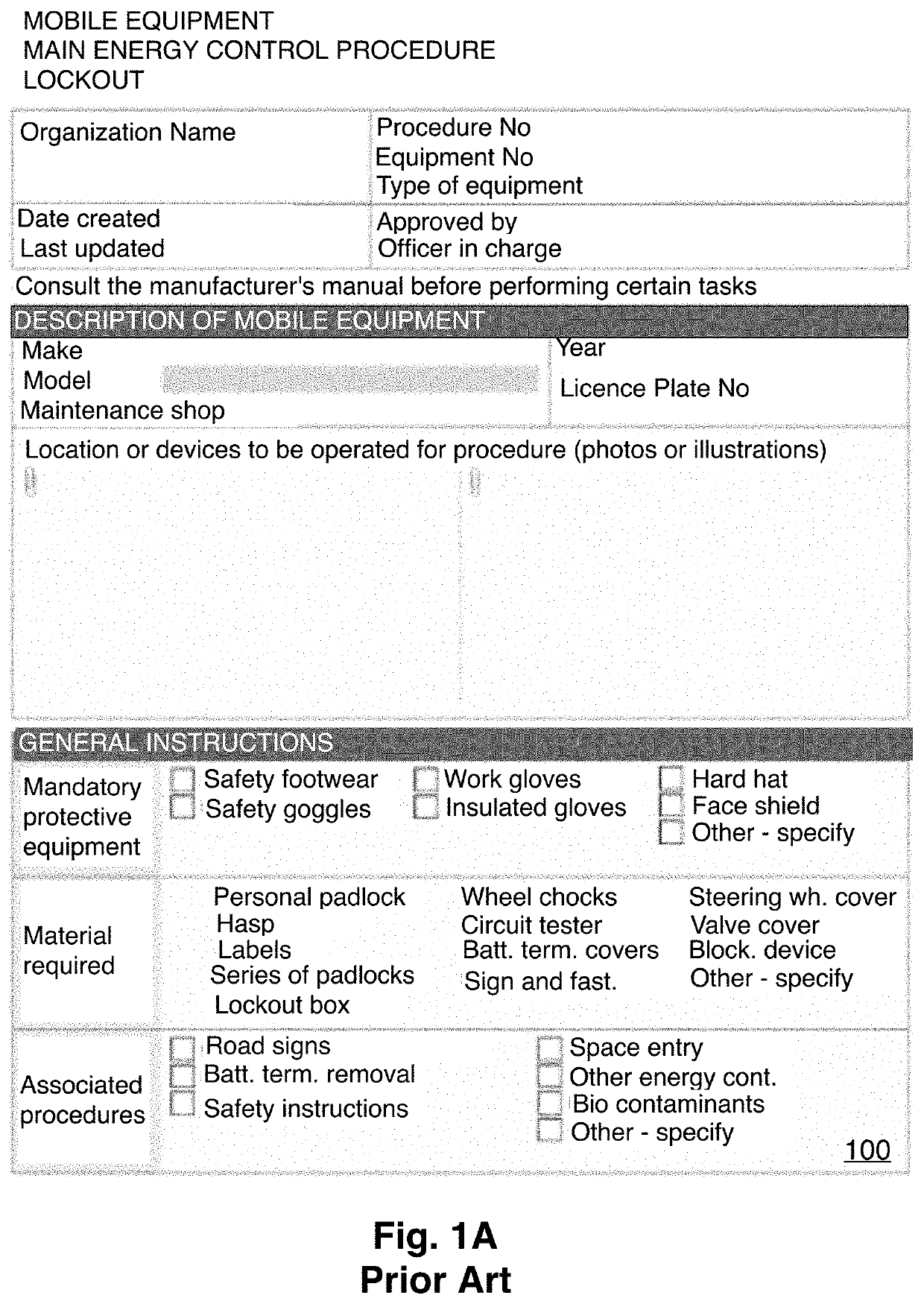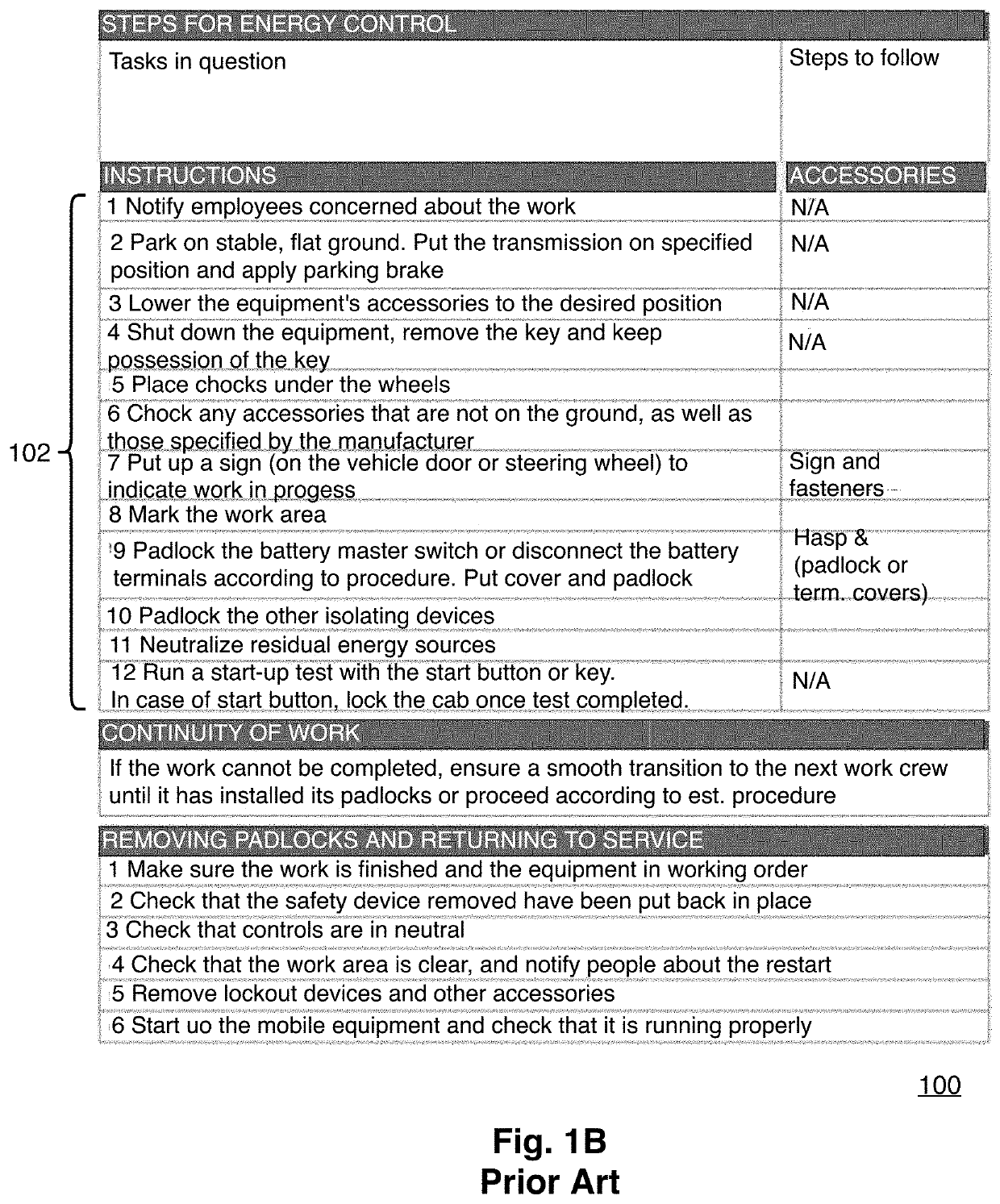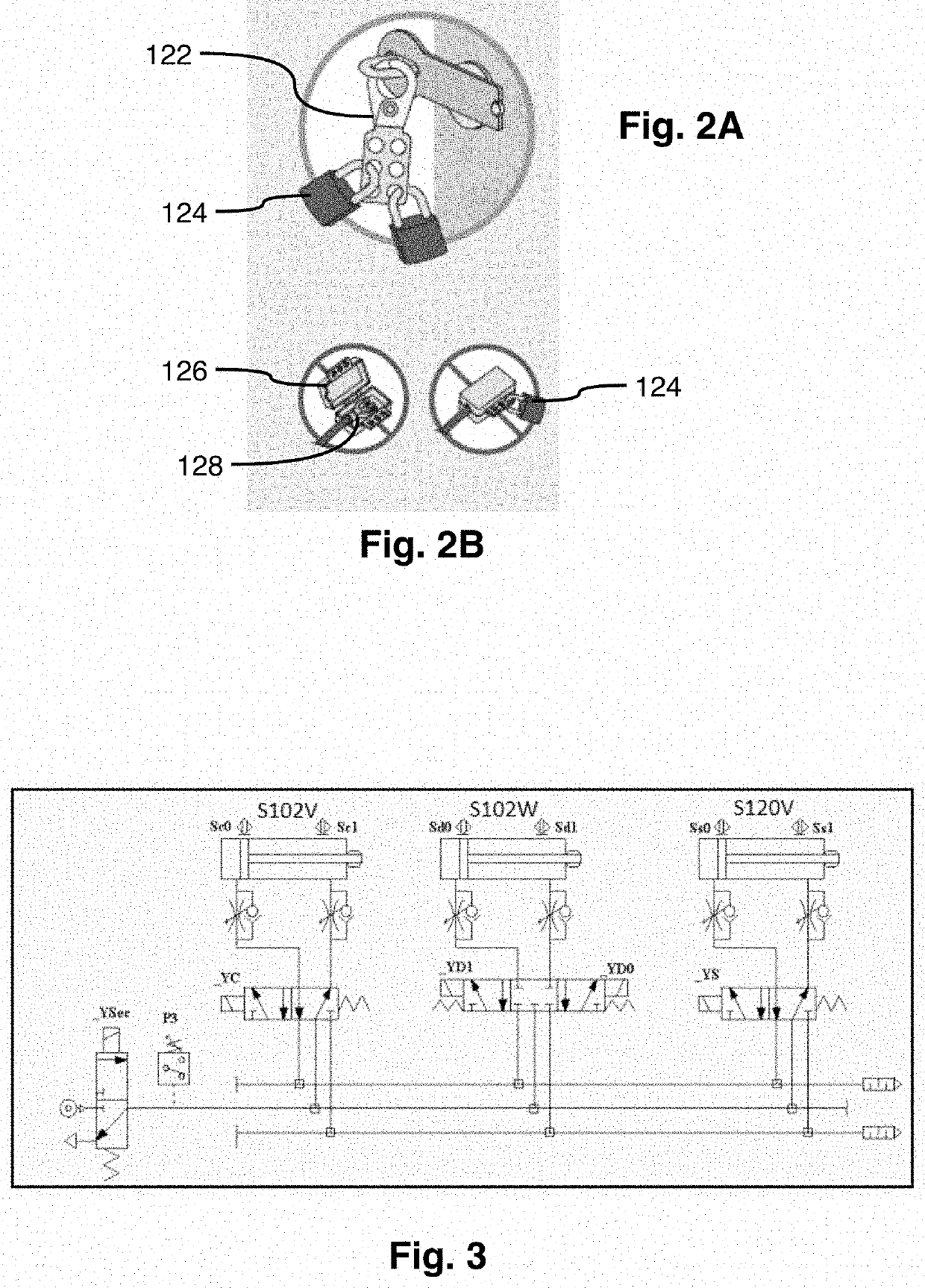Once a potentially dangerous piece of equipment is turned off, for example, the switch for the equipment may be locked out (e.g., using a hasp having multiple apertures) using multiple padlocks.
Difficulties encountered with lockout procedure include difficulty for the operator to efficiently and with a very low failure-level to validate correspondence between the pieces of equipment and / or locations listed on the procedure checklist and the physical pieces of equipment and / or locations in the workplace, with each failure in successfully performing correspondence resulting in increases risks for the operator.
In practice, if a process of the procedure checklist is ill-performed, for example over a circuit
cutting point, the associated dangerous
energy source remains to provide risks in the assumedly secured zone.
The same risks result also from an ill-determination of the location of the secured zone.
However, these solutions have important drawbacks, some regarding the costs to put in place these solutions and / or to maintain the solutions, some of them with the difficulty or the extra work associated with using these solutions.
The latter in practice results frequently in a portion of the operators failing to follow the securing procedure, and thus failing in securing the zone where they are working.
However, this kind of solution is costly to install.
Furthermore, the additional
energy source cutting means, as any piece of equipment, feature risks of future failures that may negatively influence the production capacity of the workplace in the future, that may increase the difficulty to identify the nature of failures and that may increase costs and maintenance requirements.
Finally, an increase in the number of pieces of equipment to be under lockout also increases the chances of any one of these pieces of equipment being forgotten at the time to remove the lockout from the pieces of equipment, which would automatically result in delays in production on the workplace.
Therefore, when about to work in the secured zone, an operator checks the state of the
light signal(s), and if not depicting a safe condition, the operator will have to leave the to-be-secured zone to reach the piece of equipment allowing to control the dangerous
energy source before returning to the secured zone, what may sum up to a lot of displacement.
Furthermore, this solution is costly to install, requiring once again more complex electric circuits increasing with the distance between the piece of equipment used to control the energy source and the zone to be secured.
In the particular case when two operators have to work in the same secured zone, based on distinct lockout protocols, the process becomes even more complex.
For example, it is complex for the second operator to determine the specific steps of the lockout procedure to perform versus already performed by the first operator.
Thus, risks remain with the present solution nowadays available.
Therefore, that solution provides numerous drawbacks, including that in some cases the selected solution does not match the
daily routine and requirements of the operators.
For example, such a solution may result when a
machine is under maintenance between shifts resulting in
confusion in the states of lockout or not at the beginning of the following shift.
Such installation is costly to install since these controls, must always be free of
interlock, e.g., with industrial automates and emergency stop controls.
This technique does not allow to eliminate the risks of errors since, during maintenance stops, all of the machines are stopped, which renders lockout processes upstream very difficult to test.
An outcome of this is a potentially dangerous
confusion resulting from multiple lockouts at different points along the energy line(s) feeding a
machine.
In order to mitigate the risks of
confusion, some companies require to perform a starting test over a
machine before performing a lockout process, which results once again in costs and delays.
Thus, all of these solutions have drawbacks having variable results
ranging from increased costs, decreased productivity, increased sources of confusion, a decrease of the engagement of the operators in following the procedures and increased risks, which is opposed to the object of these procedures to eliminate or at least to mitigate these risks.
 Login to View More
Login to View More  Login to View More
Login to View More 


